It’s an 85-step climb to the hilltop home of Frederick Douglass in D.C.’s predominantly African American Anacostia neighborhood. For me, it’s just a brief cardio challenge. For Douglass, it must have served as a constant reminder of his journey from enslaved child to leading voice in the abolitionist movement, equal rights advocate and statesman.
Standing outside the 21-room estate he lovingly named Cedar Hill and enjoyed for his final 17 years, I turn around, take in the sweeping views and think of the words of the curator at Frederick Douglass National Historic Site.
“(Cedar Hill) stands atop a hill with an expansive panorama toward the south east of the city. Off in the distance to its far left is a beautiful view of the Capitol. To the far right is a tranquil vista of the state of Maryland,” writes Ka’mal McClarin. “This beautiful outlook acts as a vivid metaphor for Frederick Douglass’s life. It signified to the world the heights to which he rose by the latter years of his life.”

Inside the visitor center there is a statue of Frederick Douglass near a wall full of his famous quotes/Jennifer Bain
Born enslaved in Maryland in February 1818, Douglass later chose Valentine’s Day as his birthday because that was the last time he saw his mother — sitting on her lap and eating a heart-shaped ginger cake — before she died in a forced labor camp. He took on the surname of one of the rebellious heroes of Sir Walter Scott’s 1810 narrative poem “The Lady of the Lake.”
Douglass escaped his enslaver to become the Father of the African American civil rights movement in the United States and an internationally renowned activist. “His brilliant words and brave actions continue to shape the ways that we think about race, democracy, and the meaning of freedom,” says the National Park Service. He bought Cedar Hill for $6,700 in 1877 and lived there until his 1895 death at the age of 77.
I’ve come to Washington, D.C. in June to explore the green side of the nation’s capital at Anacostia Park and Kenilworth Park & Aquatic Gardens (home to lovely water lilies and lotus flowers). The Frederick Douglass site is in the same southeast part of town, but I don’t realize until I arrive just how tranquil the eight-acre urban estate is going to be.
“Let us be silent awhile and listen to nature,” Douglass once said. I plan to do just that, but first take a guided tour of the historic house.

Cats love sitting outside the visitor center for Frederick Douglass National Historic Site, which is in a residential neighborhood in D.C./Jennifer Bain
The fee-free site is open year-round but currently only on Tuesdays, Wednesdays and Saturdays due to temporary staffing challenges. Tours happen five or six times daily and reservations are strongly encouraged. I wait at the gate before 9 a.m. and nab one of the first-come, first-served tickets when the visitor center opens.
The house is on top of a 51-foot hill and while you can walk up a winding ramp, I opt for those 85 steps.
Volunteer Matthew Knudson welcomes us to the tour, asks us to be mindful of our bodies and bags and not bump into anything, and warns us to avoid flash photography, stay with the group and not stray off the carpet onto any wooden floors.

Anna Murray Douglass, the first wife of Frederick Douglass and mother to his five children, helped him escape enslavement/Jennifer Bain
It’s dark and cool in Cedar Hill, which has been restored to its 1895 appearance and is furnished with original objects. The home is bathed in natural light. On July 4, 2023, it reopened after a three-year closure that started because of the pandemic and continued so a HVAC system could be installed. Changing humidity levels had damaged historic oil paintings and the finish on furniture.
“The new HVAC system provides a consistent temperature and humidity level, which is essential to preserving the home and the 3,000 items that belonged to Douglass — one of the largest collections of Frederick Douglass’s items,” park superintendent Tara D. Morrison said at the time.
Douglass was known as the “Sage of Anacostia” because of his “indomitable intellectual spirit.” Among other things, he held prestigious offices including assistant secretary of the Santo Domingo Commission, legislative council member of the D.C. Territorial Government and board member of Howard University. Every object in Cedar Hill tells a story and we start by studying portraits of his two wives.

Helen Pitts, a white woman, caused a stir when she married the widowed Frederick Douglass/Jennifer Bain
Anna Murray was a young, free Black woman who bought Douglass a train ticket, sewed him a sailor’s uniform and secured borrowed freedom papers, risking her own safety to help him seize his freedom in 1838 on a train from Baltimore to New York City. They had five children.
After Anna died in 1882, Douglass married Helen Pitts. “She was a younger white woman, which back then didn’t go down well because interracial relationships and marriages were taboo,” says Knudson. “It caused a firestorm of controversy.” Douglass willed the house and land to Helen, but legal challenges forced her to buy out the claims of other family members.
Helen founded the Frederick Douglass Memorial and Historical Association to preserve Cedar Hill and her late husband’s legacy at a time when the only other home that was preserved was George Washington’s home Mount Vernon. “Historic buildings rarely survive generations by accident,” says the NPS. “Someone made a choice, or in the case of the Douglass Home, a whole lot of women made a whole lot of choices over decades.”

Volunteer guide Matthew Knudson details what's in the parlor of Frederick Douglass's D.C. home/Jennifer Bain
The site ran as a museum until Frederick Douglass Home was established by President John F. Kennedy on Sept. 5, 1962. It reopened in 1972 after extensive restorations and added a visitor center in 1982. Congress passed legislation redesignating the home as a national historic site in 1988.
Some 70,869 people made pilgrimages here in 2018, the Bicentennial of Douglass’ birth. After pandemic and HVAC replacement closures, the site welcomed just 12,900 people last year. “We are actively hiring more park guides to extend our open days and provide even greater access to this significant landmark,” says Michael Donato, chief of staff for National Capital Parks — East.
We take turns standing in the doorway of the study where Douglass wrote speeches and memoirs from a wooden desk. A leather-bound Bible, embossed with his name on the front cover, is kept in a climate controlled NPS curatorial facility. It has been brought out for things like the 2023 swearing-in ceremony for Wes Moore, the first African American elected as governor for Maryland.
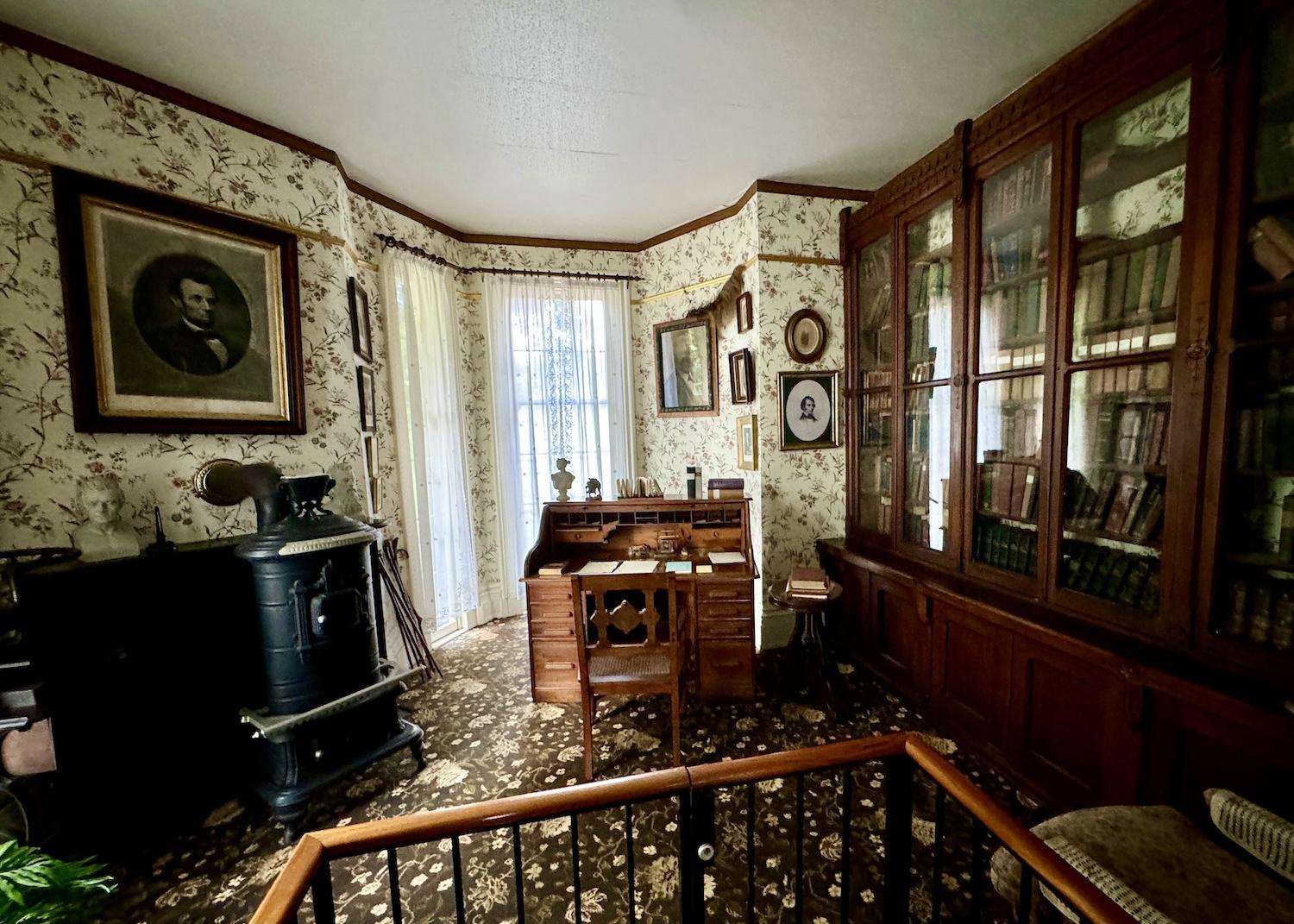
The desk that Frederick Douglass wrote at anchors his private study/Jennifer Bain
Douglass became a national leader of the abolitionist movement in Massachusetts and New York, actively supported women’s suffrage and held several public offices. “He believed in dialogue and in making alliances across racial and ideological divides,” says the NPS, which delves into the language of enslavement on its website and encourages people to now say enslaved instead of slave, enslaver instead of master, human trafficking instead of slave trade, and forced labor camp instead of plantation.
Every Independence Day, actor Michael Crutcher stands on Cedar Hill’s front porch and gives a reading of one of Douglass’s most famous speeches — “What to the American Slave is the Fourth of July?” The original speech was given on July 5, 1852 for the Rochester Ladies’ Anti-Slavery Sewing Society and included the line “All men are created free.”
My tour continues with a look at the parlor, dining room, pantry and kitchen and we learn that Douglass had a small staff that included maids, cooks, a gatekeeper, carriage keeper and doorman. Upstairs we peek into bedrooms that kept the genders separate as per Victorian age etiquette.
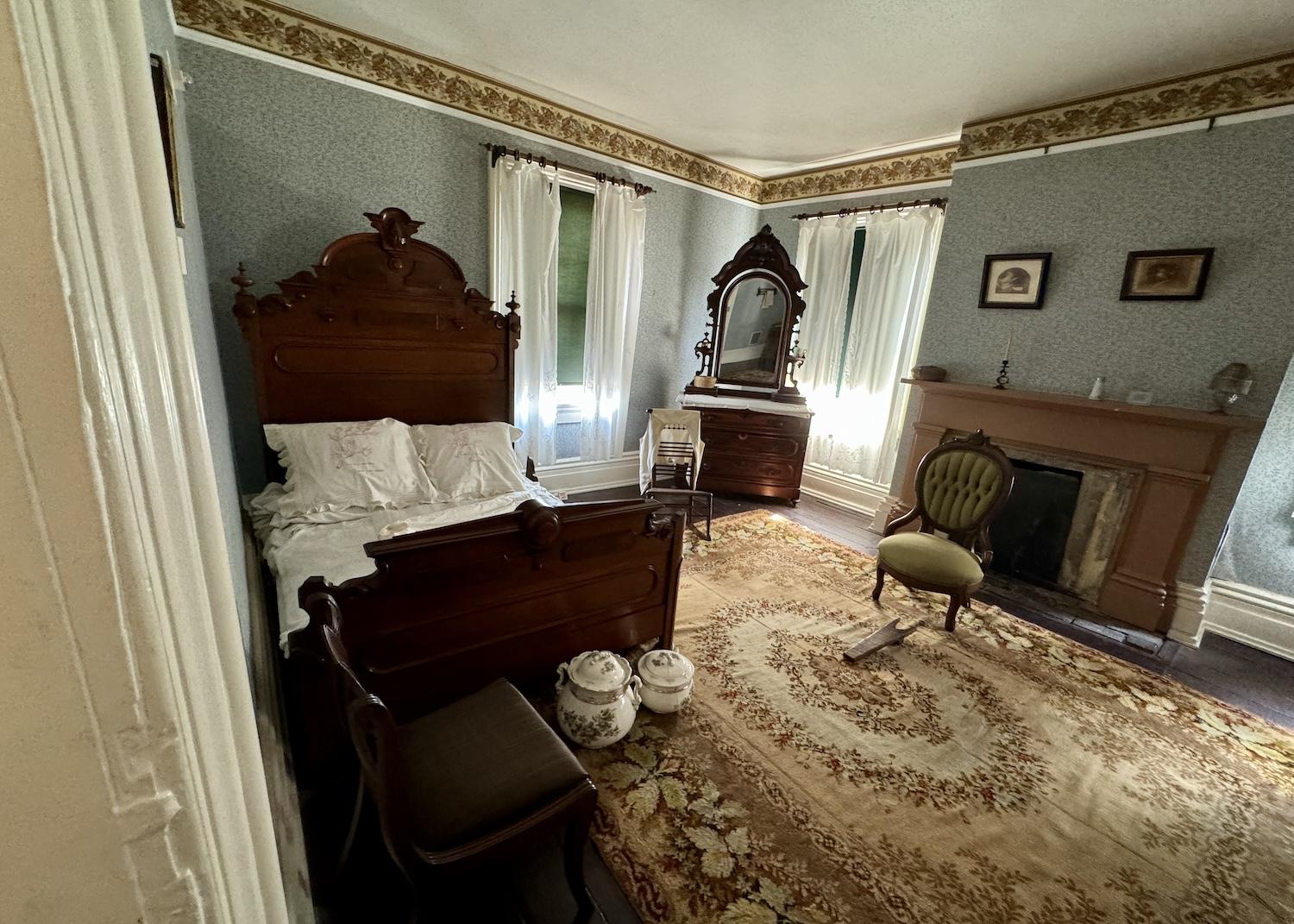
Frederick Douglass slept upright and so had an unusual custom-made bed/Jennifer Bain
“Having space to call your own was considered paramount if you were wealthy enough,” explains Knudson. “And I know they also did that in the new season of Bridgerton, so I guess they’re emulating that if you watch that show.”
Douglass — who was about six-feet tall — had a low and short bed with a large headboard. He slept upright because he believed in alternative medicine and felt this would help with memory, digestion and other ailments.
After detailing how abolitionists like Douglass were often the target of violence, Knudson recommends we look out the second-floor window. “Cedar Hill is one of the highest natural points in the entire city. We have a really great view of the entire area — downtown, the National Mall," he notes. "The area we are in today, which is called Anacostia, back then it was a predominantly white and rural suburb called Uniontown so most of the area was very sparsely populated and very underdeveloped, so for Douglass that was perfect. It was isolated and hard to get to and that’s what he wanted.”

A view of the Anacostia neighborhood from the steps leading to Cedar Hill, once the home of abolitionist Frederick Douglass/Jennifer Bain
The tour ends on a sober note downstairs in the foyer where Douglass died of a heart attack after attending a women’s rights convention and having a meal with Helen before preparing to head out to give a speech. Thousands attended his downtown D.C. funeral and he was buried with his two wives and youngest daughter in Rochester, where he lived and worked before moving here.
The man who spent his life fighting for justice and equality also loved nature and this elevated property filled with trees. I stroll around the fenced grounds and spend a few reflective moments inside a reconstructed one-room stone building with a fireplace.
Probably inspired by Charles Dickens who coined the word "growlery" in his novel Bleak House as a place to go in bad humor and growl, Douglass called this his “Growlery.” He furnished it simply with a desk, stool and couch and retreated here to read, write and think in seclusion. It's nothing like the grand house yet easy to see picture Douglass moving joyfully between the two spaces.
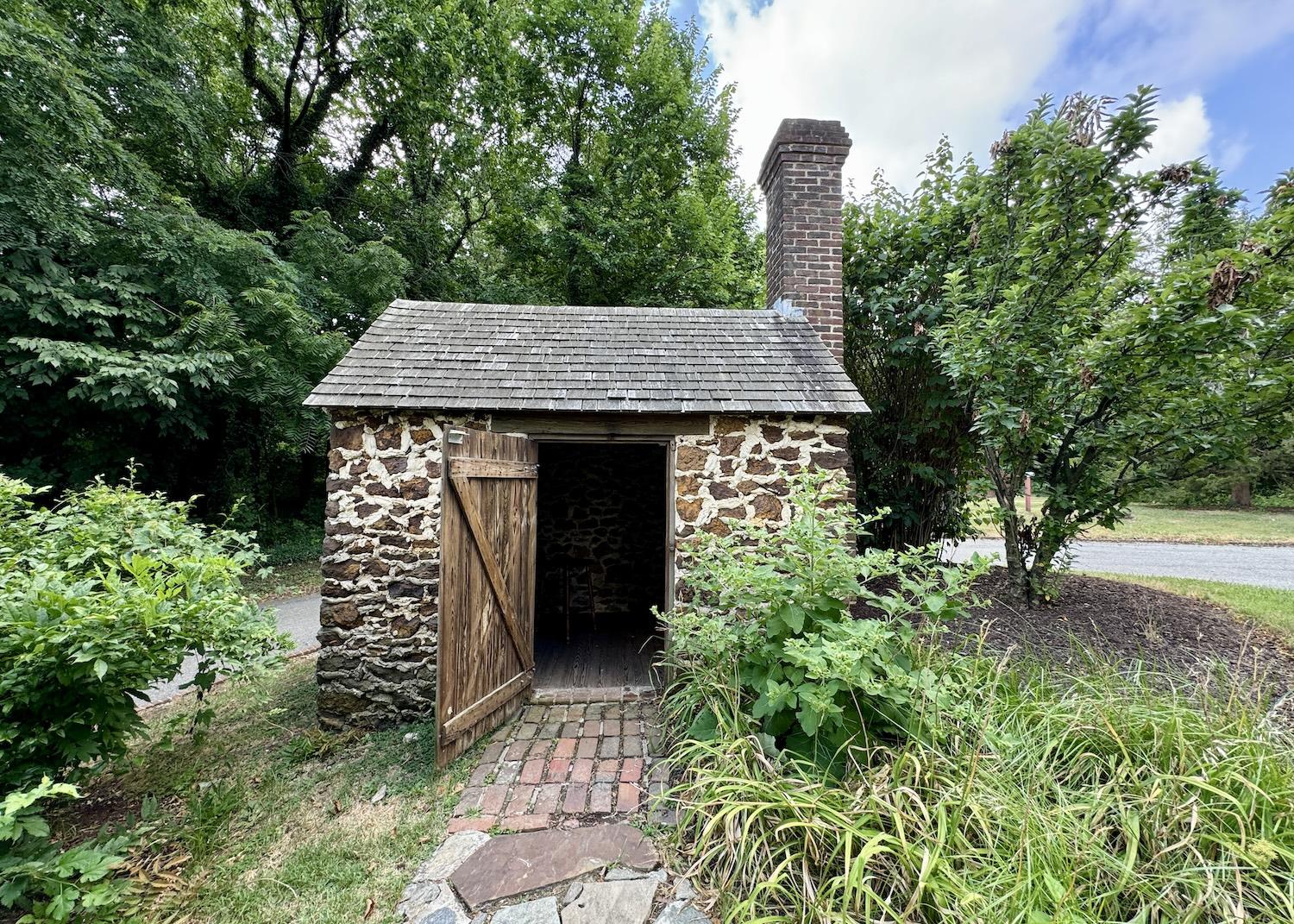
Behind the grand Cedar Hill house is a one-room stone building called the Growlery where Frederick Douglass would retreat/Jennifer Bain

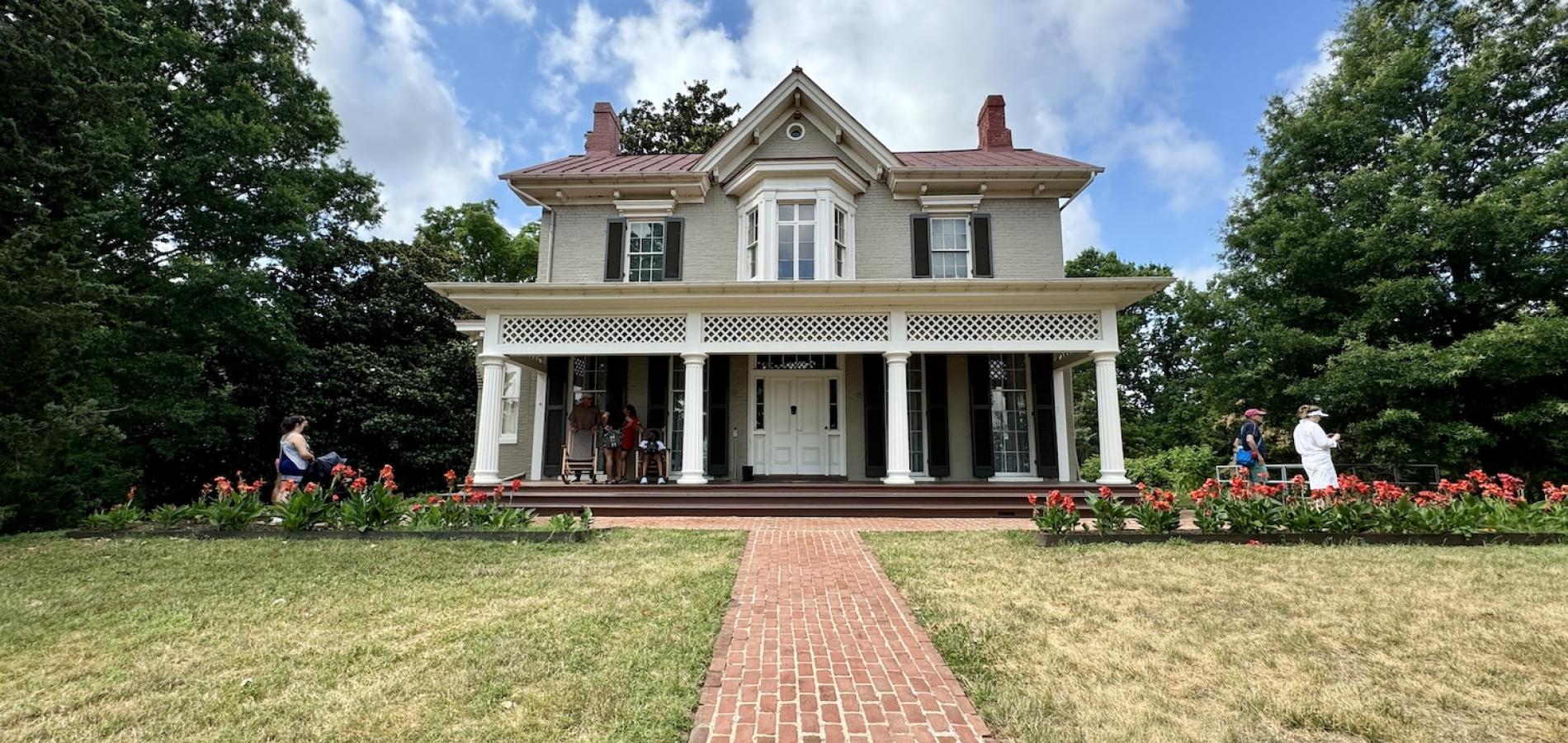
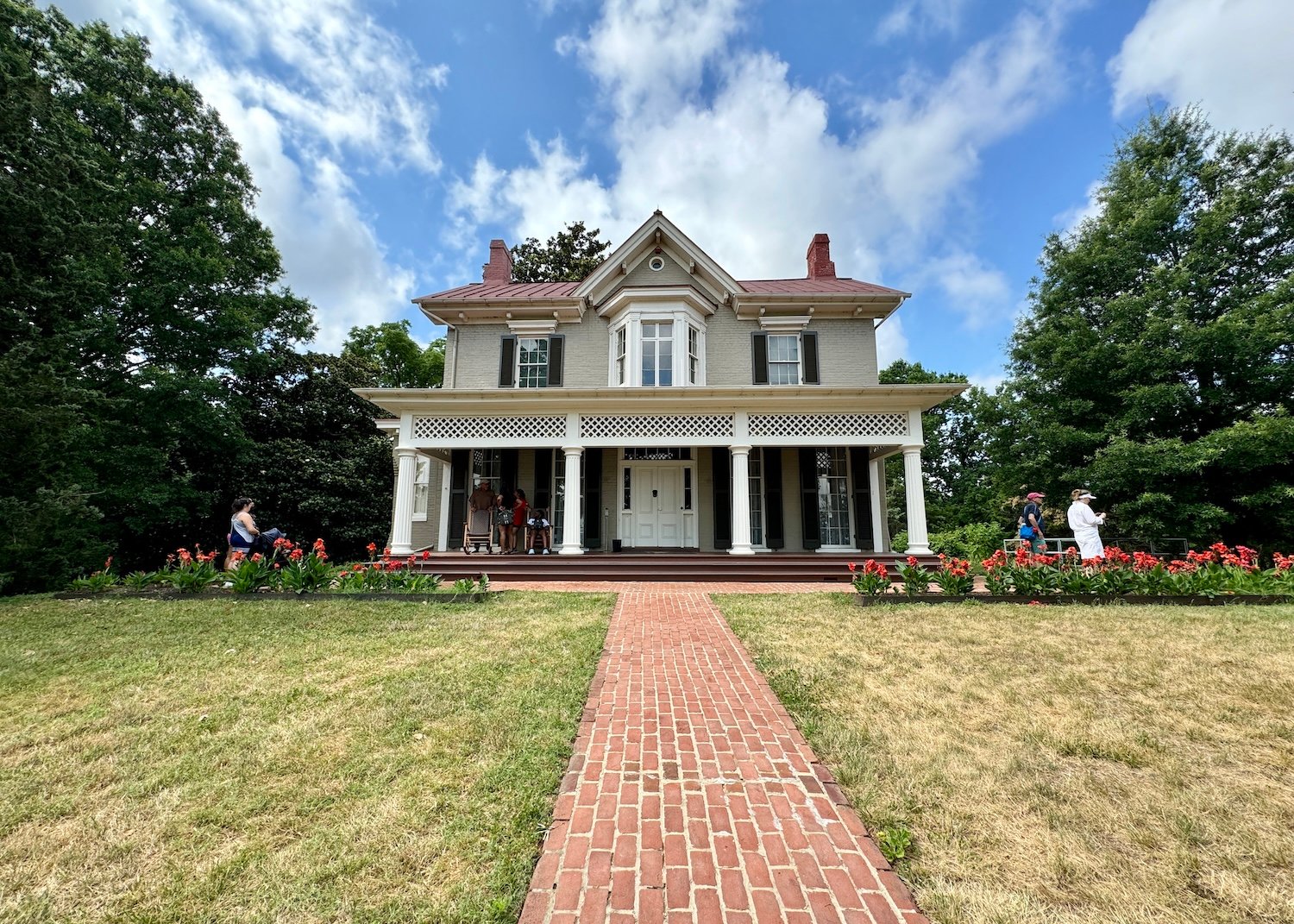
 Support Essential Coverage of Essential Places
Support Essential Coverage of Essential Places






